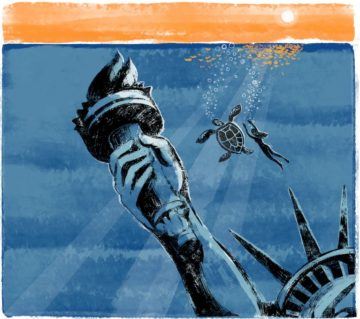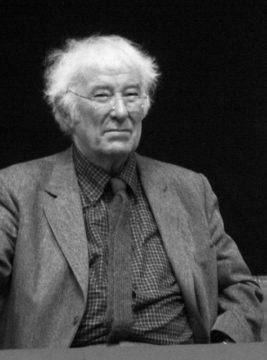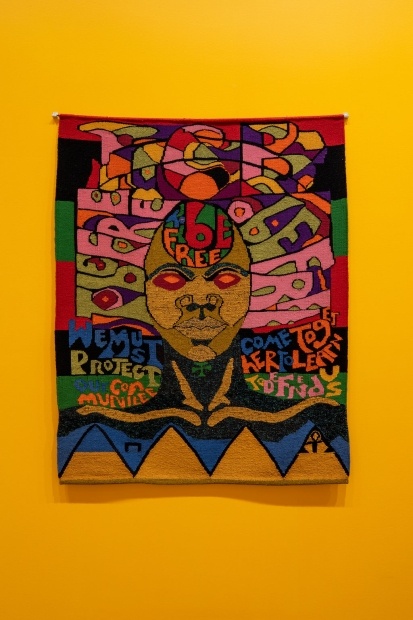Alan Jacobs in The Hedgehog Review:
 Near the end of his brilliant memoir Tristes Tropiques, anthropologist Claude Levi-Strauss describes his visits to various rum distilleries in the Caribbean:
Near the end of his brilliant memoir Tristes Tropiques, anthropologist Claude Levi-Strauss describes his visits to various rum distilleries in the Caribbean:
In Martinique, I had visited rustic and neglected rum-distilleries where the equipment and the methods used had not changed since the eighteenth century. In Puerto Rico, on the other hand, in the factories of the company which enjoys a virtual monopoly over the whole of the sugar production, I was faced by a display of white enamel tanks and chromium piping. Yet the various kinds of Martinique rum, as I tasted them in front of ancient wooden vats thickly encrusted with waste matter, were mellow and scented, whereas those of Puerto Rico are coarse and harsh.
Meditation on this contrast leads Levi-Strauss to a more general insight:
We may suppose, then, that the subtlety of the Martinique rums is dependent on impurities the continuance of which is encouraged by the archaic method of production. To me, this contrast illustrates the paradox of civilization: Its charms are due essentially to the various residues it carries along with it, although this does not absolve us of the obligation to purify the stream. By being doubly in the right, we are admitting our mistake. We are right to be rational and to try to increase our production and so keep manufacturing costs down. But we are also right to cherish those very imperfections we are endeavouring to eliminate. Social life consists in destroying that which gives it its savour.
A melancholy reflection, to be sure—but perhaps not an inevitable one.
More here.

 Lidia Yuknavitch’s extraordinary new novel is the weirdest, most mind-blowing book about America I’ve ever inhaled. Part history, part prophecy, all fever dream, “
Lidia Yuknavitch’s extraordinary new novel is the weirdest, most mind-blowing book about America I’ve ever inhaled. Part history, part prophecy, all fever dream, “ Can artificial intelligence come alive?
Can artificial intelligence come alive? Y
Y Microscopic mites that live in human pores and mate on our faces at night are becoming such simplified organisms, due to their unusual lifestyles, that they may soon become one with humans, new research has found.
Microscopic mites that live in human pores and mate on our faces at night are becoming such simplified organisms, due to their unusual lifestyles, that they may soon become one with humans, new research has found. When he first began to publish poems, Seamus Heaney’s chosen pseudonym was ‘Incertus’, meaning ‘not sure of himself’. Characteristically, this was a subtle irony. While he referred in later years to a ‘residual Incertus’ inside himself, his early prominence was based on a sure-footed sense of his own direction, an energetic ambition, and his own formidable poetic strengths. It was also based on a respect for his readers which won their trust. ‘Poetry’s special status among the literary arts’, he suggested in a celebrated lecture, ‘derives from the audience’s readiness to . . . credit the poet with a power to open unexpected and unedited communications between our nature and the nature of the reality we inhabit’. Like T. S. Eliot, a constant if oblique presence in his writing life, he prized gaining access to ‘the auditory imagination’ and what it opened up: ‘a feeling for syllable and rhythm, penetrating far below the levels of conscious thought and feeling, invigorating every word’. His readers felt they shared in this.
When he first began to publish poems, Seamus Heaney’s chosen pseudonym was ‘Incertus’, meaning ‘not sure of himself’. Characteristically, this was a subtle irony. While he referred in later years to a ‘residual Incertus’ inside himself, his early prominence was based on a sure-footed sense of his own direction, an energetic ambition, and his own formidable poetic strengths. It was also based on a respect for his readers which won their trust. ‘Poetry’s special status among the literary arts’, he suggested in a celebrated lecture, ‘derives from the audience’s readiness to . . . credit the poet with a power to open unexpected and unedited communications between our nature and the nature of the reality we inhabit’. Like T. S. Eliot, a constant if oblique presence in his writing life, he prized gaining access to ‘the auditory imagination’ and what it opened up: ‘a feeling for syllable and rhythm, penetrating far below the levels of conscious thought and feeling, invigorating every word’. His readers felt they shared in this. Nature shows have always prized the dramatic: David Attenborough himself once told me, after filming a series on reptiles and amphibians, frogs “really don’t do very much until they breed, and snakes don’t do very much until they kill.” Such thinking has now become all-consuming, and nature’s dramas have become melodramas. The result is a subtle form of anthropomorphism, in which animals are of interest only if they satisfy familiar human tropes of violence, sex, companionship and perseverance. They’re worth viewing only when we’re secretly viewing a reflection of ourselves.
Nature shows have always prized the dramatic: David Attenborough himself once told me, after filming a series on reptiles and amphibians, frogs “really don’t do very much until they breed, and snakes don’t do very much until they kill.” Such thinking has now become all-consuming, and nature’s dramas have become melodramas. The result is a subtle form of anthropomorphism, in which animals are of interest only if they satisfy familiar human tropes of violence, sex, companionship and perseverance. They’re worth viewing only when we’re secretly viewing a reflection of ourselves. “Move fast and break things,” the digital dictum of today’s Silicon Valley entrepreneurs, could have been penned by Filippo Tommaso Marinetti and his fellow Italian Futurists. Their famous
“Move fast and break things,” the digital dictum of today’s Silicon Valley entrepreneurs, could have been penned by Filippo Tommaso Marinetti and his fellow Italian Futurists. Their famous  Earlier this year, “The Kashmir Files”—a blood-soaked historical drama with a nearly three-hour run time—became the top-grossing Hindi film since the start of the pandemic. The contested region of Kashmir has caused unending conflict between India and Pakistan. In Indian-administered Kashmir, the Army has brutally subjected Muslims to extensive human-rights violations, with tens of thousands killed, thousands of forced disappearances, and an extremely high incidence of rape—which has been used, according to Human Rights Watch, as a “counterinsurgency tactic” to “create a climate of fear.” But this film tells a different story.
Earlier this year, “The Kashmir Files”—a blood-soaked historical drama with a nearly three-hour run time—became the top-grossing Hindi film since the start of the pandemic. The contested region of Kashmir has caused unending conflict between India and Pakistan. In Indian-administered Kashmir, the Army has brutally subjected Muslims to extensive human-rights violations, with tens of thousands killed, thousands of forced disappearances, and an extremely high incidence of rape—which has been used, according to Human Rights Watch, as a “counterinsurgency tactic” to “create a climate of fear.” But this film tells a different story. When Jennifer Mason posted an ad for a postdoc position in early March, she was eager to have someone on board by April or May to tackle recently funded projects. Instead, it took 2 months to receive a single application. Since then, only two more have come in. “Money is just sitting there that isn’t being used … and there’s these projects that aren’t moving anywhere as a result,” says Mason, an assistant professor in genetics at Clemson University.
When Jennifer Mason posted an ad for a postdoc position in early March, she was eager to have someone on board by April or May to tackle recently funded projects. Instead, it took 2 months to receive a single application. Since then, only two more have come in. “Money is just sitting there that isn’t being used … and there’s these projects that aren’t moving anywhere as a result,” says Mason, an assistant professor in genetics at Clemson University. Carved in marble above the entrance to the Supreme Court Building is the motto: “Equal Justice Under The Law.”
Carved in marble above the entrance to the Supreme Court Building is the motto: “Equal Justice Under The Law.” Napoleon Jones-Henderson. TCB, 1970.
Napoleon Jones-Henderson. TCB, 1970.
